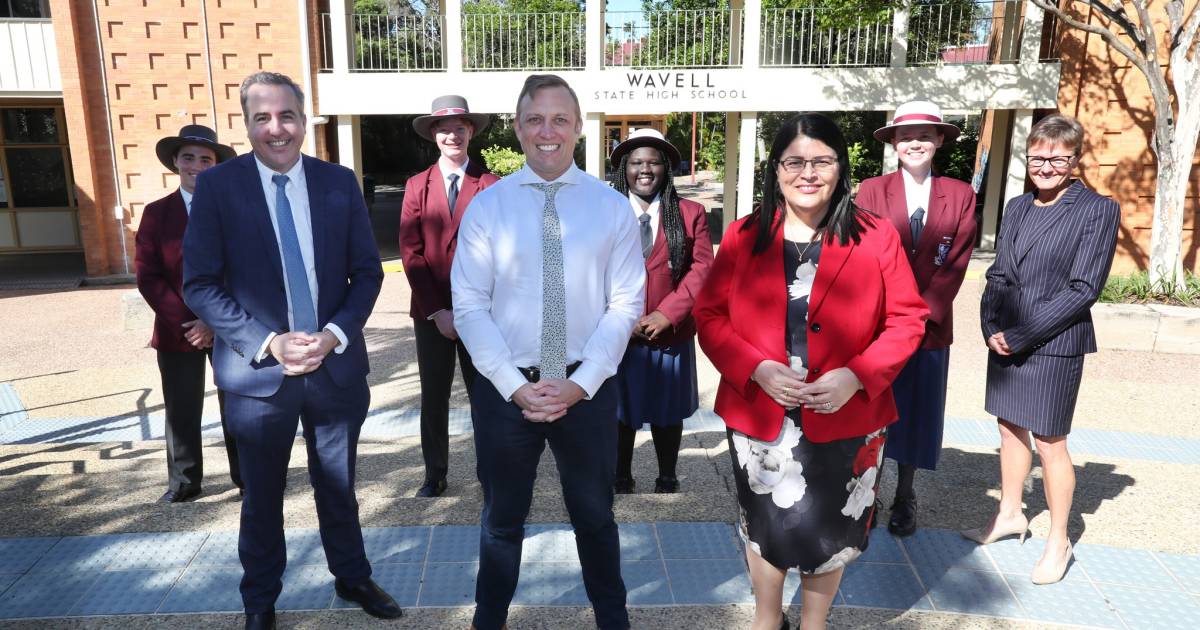
The Queensland Government says every state school is now air conditioned, with solar panels to help offset increased energy use.
In February 2020, the Pałaszczuk Government announced the Cooler Cleaner Schools Program (CCSP), a $477 million initiative that has resulted in 649 state schools having air-conditioning installed; 323 of which are in the greater Brisbane area. Due to be completed by June this year, the installations have been completed two months ahead of schedule.
“We know that students learn best when they’re in cooler and comfortable learning environments,” said Acting Premier Steven Miles. “I know there will be some happy teachers, parents, students and staff across Queensland today.”
Education Minister Grace Grace, who possibly has the coolest name ever, said the CCSP supported around 1,000 jobs during the height of the pandemic.
While comfortable kids may make for better and happier students (and teachers), air-conditioning a school also means much greater electricity consumption and much bigger energy bills. We noted back in 2019 Queensland’s state schools were spending more than $71 million each year on energy at that point.
Solar Energy’s Role In Cooler Schools
But part of the Queensland Government’s investment is a $71 million boost to its Advancing Clean Energy Schools (ACES) program, installing solar panels on school rooftops to assist offsetting this substantial extra energy consumption.
Minister Grace said the extra 80,000 solar panels to be installed under the program will generate around “26 MW of additional energy”.
I think the Minister may be a little confused as a megawatt is a measure of power, not energy. Energy is measured in watt-hours, kilowatt-hours, megawatt-hours and so on. You can learn more about the difference between power and energy here.
Given there’s 80,000 solar panels involved, the Minister perhaps meant 26MW of capacity will be added. That being the case, these systems would (very roughly and conservatively) generate around 37,960 megawatt-hours of energy, or 39.6 gigawatt-hours, annually.
The ACES program has been rolling out for quite a while – for at least three years – and involves more than 800 schools in total.
ACES And Queensland’s Renewable Energy Target
The combined investment of $168.1 million for the ACES program will add approximately 61.4 megawatts of solar capacity, which will count towards the Queensland Government’s 50% renewable energy by 2030 goal.
On a related note – how’s that goal tracking?
According to OpenNEM, renewables contributed 19.2% to electricity consumption in Queensland last year, and rooftop solar power accounted for half of that figure. Last year, coal-fired power generation represented a whisker over 75% of consumption. Judging by progress to date, the Pałaszczuk Government is going to need to get cracking in order to reach its 2030 goal as the years will fly by.
So, if you’re a Queenslander and would like to do you bit towards helping the state government reach that target – and save a bundle on your own household’s electricity costs of course, learn more about going solar in Queensland.
Trivia: More than 863,000 small scale solar power systems have been installed in Queensland to date.

 RSS - Posts
RSS - Posts



Speak Your Mind